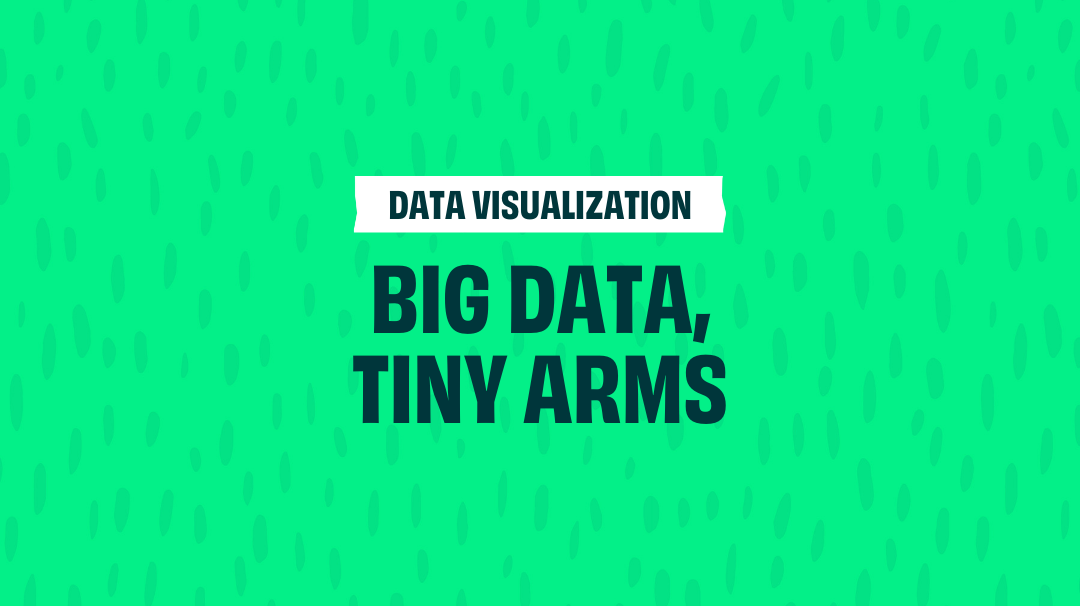Any expert analyst will confirm that data is just a bunch of numbers until you can use it to tell a story. Gathering and analyzing data is only half the battle; you must be able to distill information in a meaningful way to garner attention, communicate key takeaways and drive action. Enter: data visualization.
What is Data Visualization?
Data visualization refers to the graphic representation of data. In practice, it relates to translating data into a visual context to make it easier to understand and to draw conclusions. Analysts can apply this practice to virtually any industry, but we’re particularly interested in how it relates to the public health sector.
In the public health sphere, health experts often work with large, complex data sets. Data visualization helps them communicate critical information to industry peers, government officials, business leaders, or the general public in a digestible and meaningful way. In this blog post, we’ll explore the significance of data visualization in public health and how experts use illustrations to better present health-related data to drive impactful change.
Why is Data Visualization Important?
Data visualization is important because it makes the analysis process more efficient, helping professionals shine a light on key insights, such as patterns, correlations, trends, and outliers in large data sets. These insights can help speed up decision-making processes and can be more quickly translated into actionable next steps for stakeholders. By presenting findings in an engaging, accessible representation, you can communicate information to a broad audience while holding their attention and interest.
How Data Visualization Works
Visualization helps speed up the analysis process so that decision-makers can better understand the data, but how do analysts go about translating this data into meaningful illustrations in the first place? As companies use the power of machine learning and various technologies to collect data, they need a way to analyze, understand, and tell the story of what’s happening between data point A and data point B.
Analysts use tools such as Tableau, Microsoft Power BI, and Domo to create an automated scalable way of translating data into a visualization. This process usually involves cleaning, structuring, and massaging the data into a format the system can understand. Once this automated system has been established, the analyst will choose how to represent the data, whether that’s a chart, graph, diagram, animation, or another form of illustration. This visualization will serve as an engaging way to tell the story behind the data.
Data Visualization for Good: Greenlink Analytics
In a recent episode of The Digital Footprint podcast, we interviewed Matt Cox, the CEO and Founder of Greenlink Analytics. We discussed the importance of providing clean energy, equity transition, and the idea behind GEM (the Greenlink Equity Map), a SaaS product Matt and his team developed that provides users with powerful and dynamic map-based data visualizations related to various equity indicators. Clean energy, climate change, and equity issues are among the most pressing challenges society faces in the 21st century. Apart from affecting broader communities, such problems have an impact on families at the household level through stressors such as utility bills, which tend to be high primarily in low-income communities. Matt and his team are using data visualization to better illustrate how these issues are connected and explore what can be done to resolve them.
The GEM platform maps 25 equity indicators down to the neighborhood level to encourage genuine collaboration and partnership for a cleaner and more equitable future. The data gathered shows what’s happening on the ground in these communities, and the shared visibility allows decision-makers to have more informed discussions about the strategies and policies needed to improve the situation.
One particularly cool feature of GEM is the ability to overlay multiple data sets in order to identify trends in correlation and causation. Comparing data sets in this way allows analysts to better illustrate the “why” and the “how” in the story they are telling. You can tune into our podcast to learn more about how this software can help cities, community-based organizations and nonprofits accomplish their goals.
Bringing Data Visualization to Your Brand
Does data visualization sound like a solution that could solve a problem for your organization? Businesses large and small rely on some form of data storage and interpretation, and we have years of experience building solutions for clients of all sizes. Our toolbelt is versatile, and our team is equipped to pick and implement the ideal technology solution and data visualization strategy to best achieve your specific goals.


